
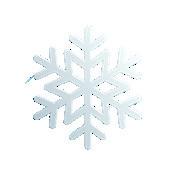



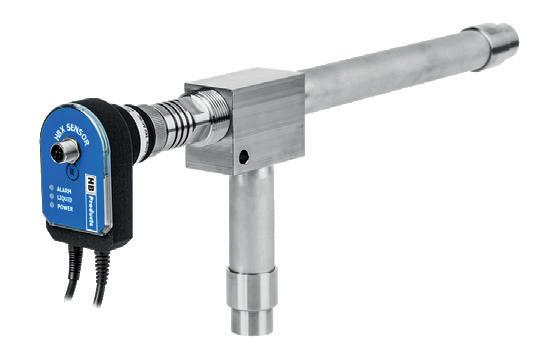












The Vapor Quality sensor is a unique sensor able to measure the liquid content in the evaporator output. The sensor is used both in liquid overfeed systems as well as in direct expansion systems.
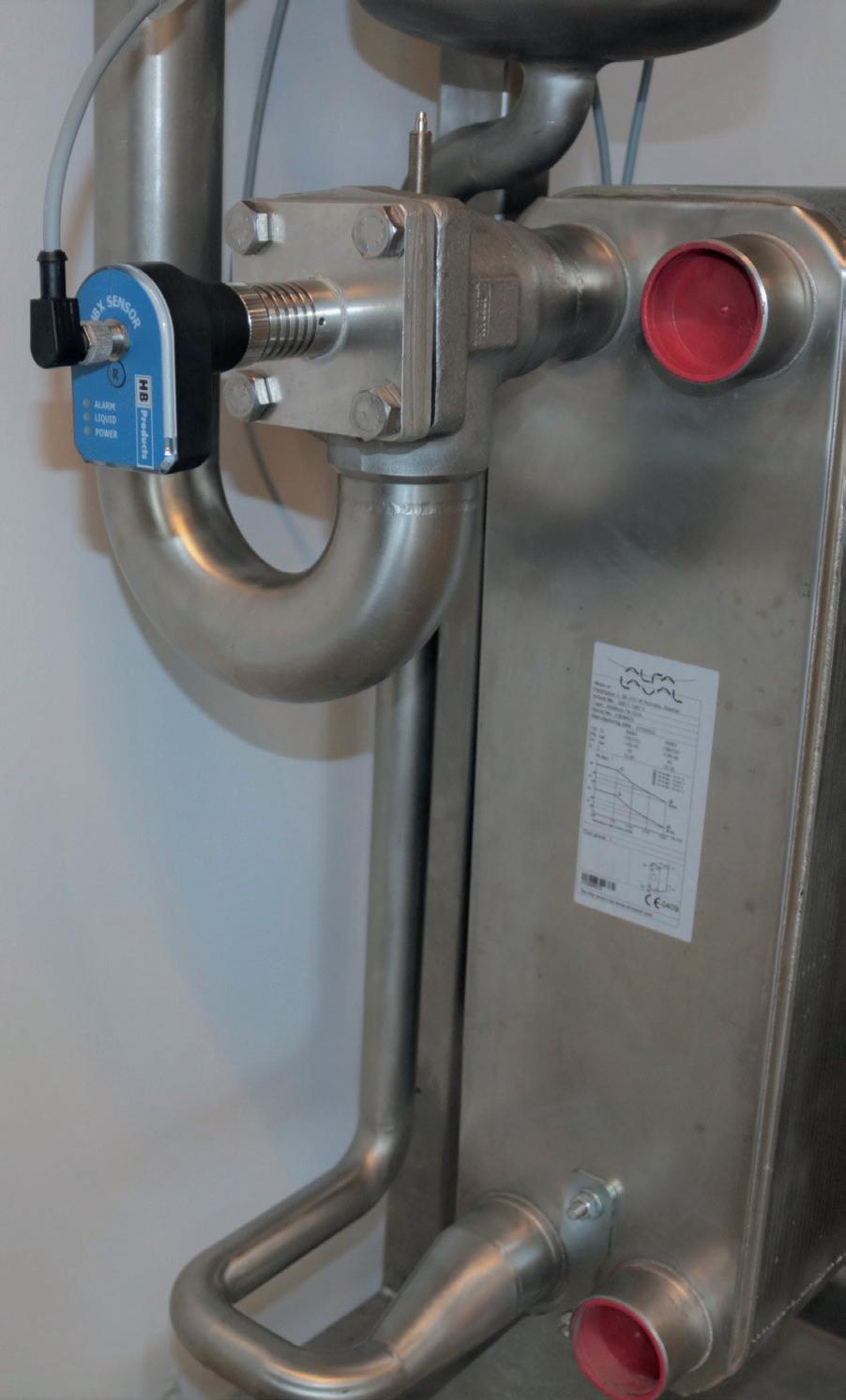
In liquid overfeed systems the sensor can be used for controlling the circulation ratio and hence reduce the energy consumption. Other benefits are increased cooling capacity and risers work ing during part load.
In DX systems the sensor replaces the superheat control and due to a faster control loop the superheat can be reduced to less than 1K. For large ammonia systems the sensor enables low charge systems with the same efficiency as in liquid over feed systems.

The sensor is capacitive and detects liquid in the gas liquid mix leaving the evaporator. The measurement is instant and pro vides a much better feedback for the control than a tempera ture sensor used for superheat control. This allows for a lower superheat and smaller variation.

The sensor consists of an inner and an outer pole. The gas with liquid flows through the sensor between the two poles and the liquid content is detected.
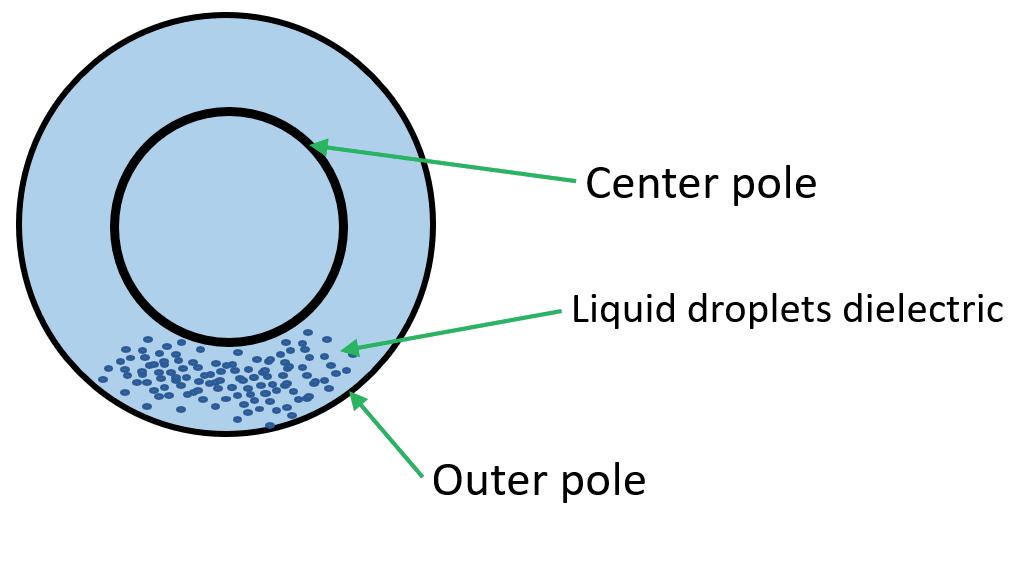
Liquid overfeed systems can be both simple and efficient, but during part load the efficiency decrease and the capacity drop if the circulation is not con trolled. Circulation of liquid increase the power consumption on the compres sors and reduces the cooling capacity because the low heat transfer in evaporator.
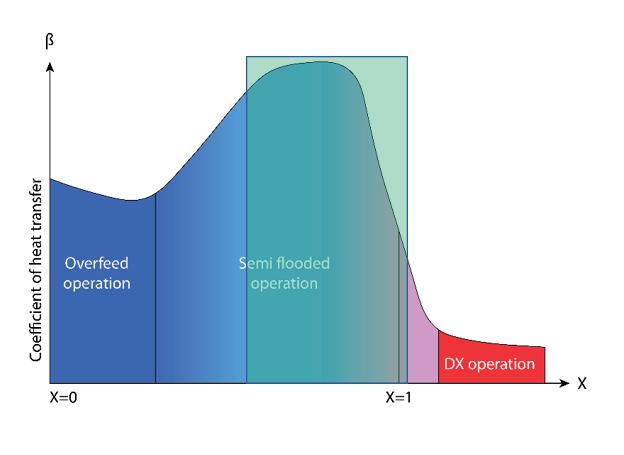
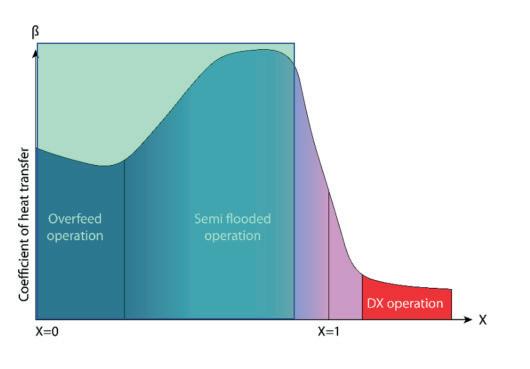
To improve the energy efficiency of an liquid overfeed system the circulation ratio must be a low as possible while maintaining a good liquid distribution in the evapo rator.
The Vapor Quality sensor is installed just after the evaporator, and it can measure the circulation ratio. Then the pump capacity control or liquid valves can be used to reduce the liquid flow is based on the meas urement – this maintains a constant circulation ratio.
The low circulation ratio secures the refrigerant is boil ing which leads to maximum heat transfer and effi ciency. The optimal heat transfer is obtained when the gas content is high, and boiling is intensive.

The circulation ratio must be low even during part load. The evaporator operates where it is most efficient


When the circulation ratio increases dur ing part load the cooling capacity is reduced and the energy efficiency is reduced. The evaporator operates where it is inefficient.
Vapor Quality installed on Air-cooled evaporator with distributor, Scantec RefrigerationLarge low and ultra low charge DX systems are possible to control when using Vapor Quality control – even for ammonia plants.
Large DX systems based on superheat control are normally rather inefficient due to a superheat of more than 5K. By controlling based on Vapor Quality measurement the superheat can be reduced to less than 1K. This means large systems can be constructed as low charge DX systems with an efficiency better than conventional liquid overfeed systems.
Since 2015 more than 25 cold stores has been built in Australia alone using low charge ammonia systems. These cold stores have energy consumption below 20 kWh/m3/year and this number can not be reached by common liquid overfeed systems
In a DX system it is important to control the expansion valve optimally. If the gas is super heated the pressure loss grows rapidly and the cooling capacity drops. If the liquid is not evaporated completely the compressor can be damaged.
The Vapor Quality sensor measures the liquid content in the gas and this signal is used for valve control. The measurement has no delay and makes it significantly better than the temperature measurement used for cal culating the superheat. The instant meassurement is reason for the faster and more accurate control which allows for a superheat less than 1K.
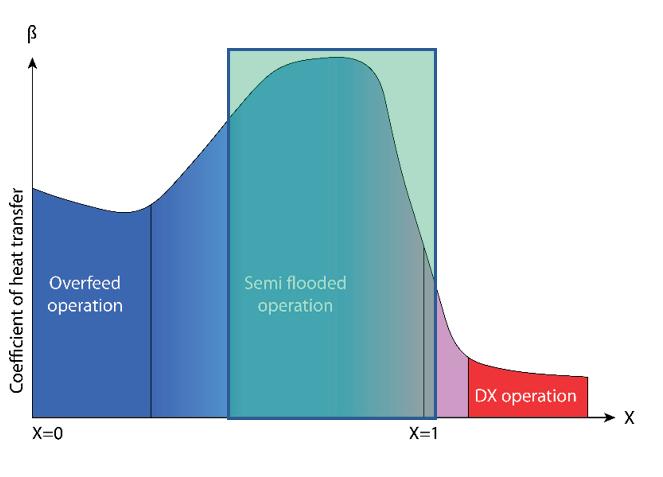
When the liquid is boiling and evaporating rapidly the evaporator is most efficient. When the superheating is minimized the heat transfer is high and the capacity is highest.
Vapor Quality control with less than 1K superheat means the evaporator operates where it is most efficient
In Romania, a cold store was installed in the Summer of 2020 using DX ammonia. The sys tem was started using superheat control and later the entire cold store changed to Vapor Quality control. The energy saving was 43% for the entire cold store with the same load.
In Australia several cold stores has replaced their HFC systems with new low charge DX ammonia systems. Results shown the energy reduction was up to 70%.


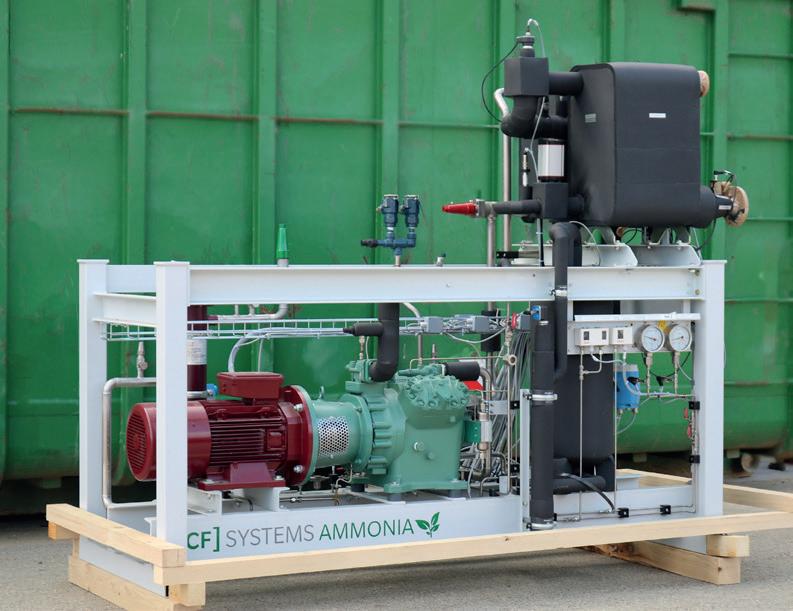


On a small 100kW industrial chiller both super heat and Vapor Quality control was implement ed. The chiller has a charge of 4 kg ammonia. The SEPR value (an EU seasonal COP) was reduced by 46 % when operated with Vapor Quality control
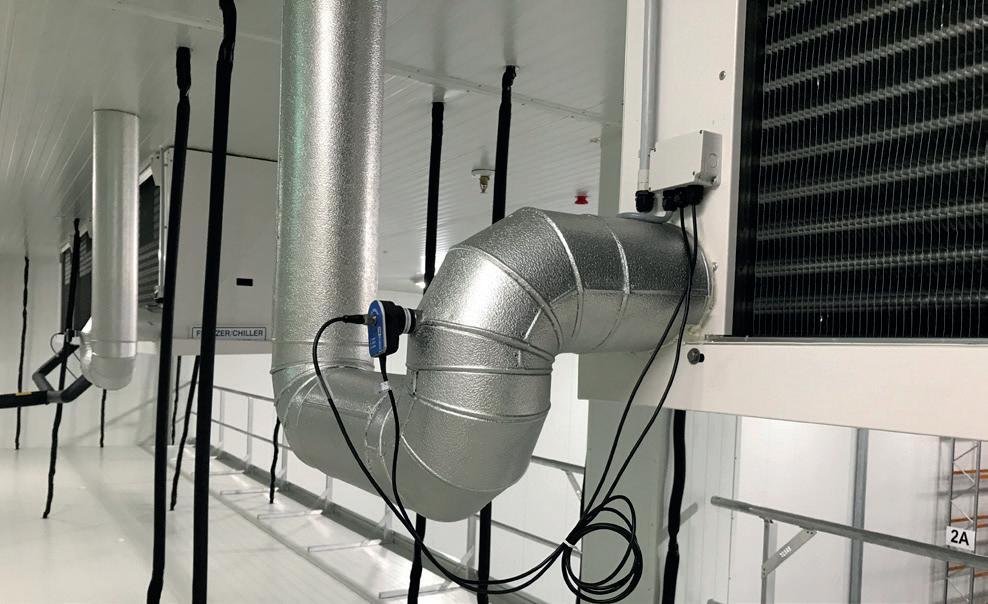

The Vapor Quality sensor is useable for all refrigerants, but some refrigerants require a more sensitive sensor compared to others. The strainer house versions are in general not suited for CO2, propane and butane.
We have different versions of the sensors suited for different systems and specially suction pipe sizes.
The angle rod is designed for smaller systems. The sensor has a high sensitivity and is suited for CO2, HFC/O and HC’s

The Inline version is the only version to be installed in a straight line. It is suited for all refrigerants.
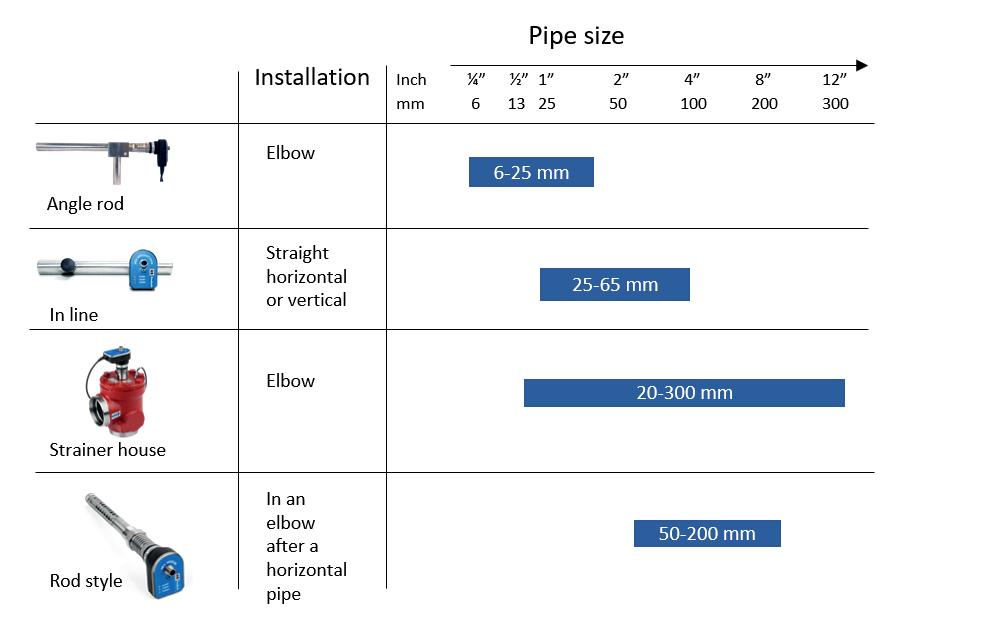
The strainer house version can be used for both small and very large suction lines. The sensor is not suited for CO2, propane and butane used in DX applications.
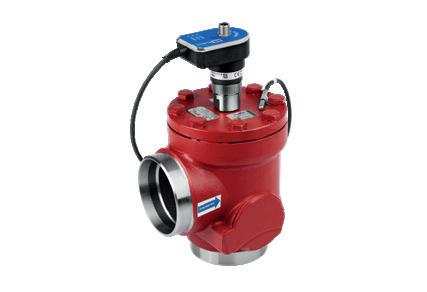
The rod style sensor can be used for all refrigerants but must be installed in an elbow and be sitting at the bottom of a hori zontal pipe.


All the sensors provide an analog 4-20 mA output linear to the liquid content of the gas. The measur ing range is adjusted for the application and is as standard set for either DX or liquid overfeed application.

The sensor can be configured with a built-in controller for direct valve control. This means the valve is controlled from the sensor based on parameters in the sensor. The modification of the pa rameters must be done directly on the sensor by use of the HB tool installed on a laptop.
This feature can reduce the cabling work and save programming cost but requires easy access to the sensor.

The sensor must be installed just after the evaporator. If the sensor is installed above the evapora tor there will be a delay and a risk of liquid accumulation between the sensor and the evaporator.

The sensor is configured and calibrated using the HB-tool which can be downloaded for free. Find it on www.hbproducts.dk/en/hb-tool
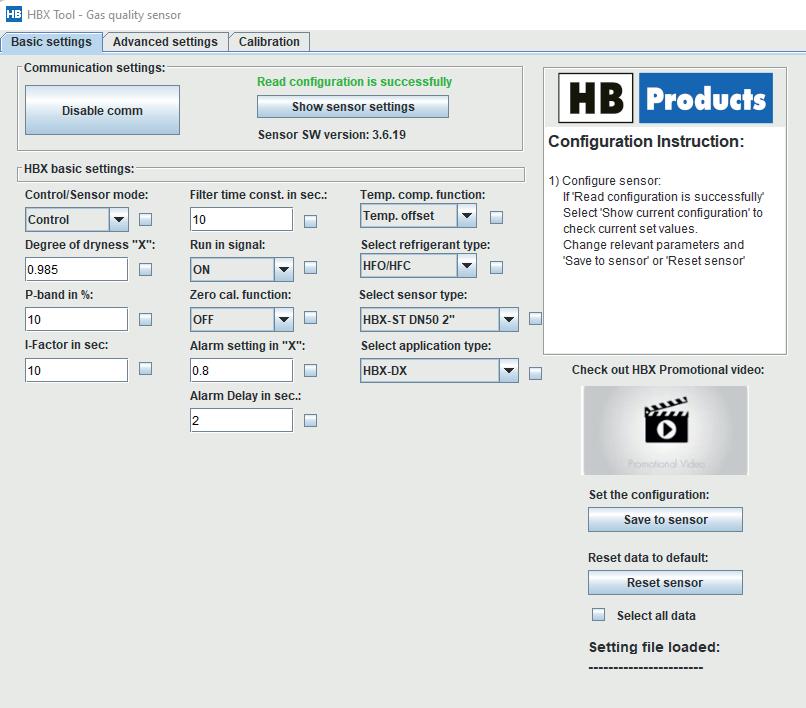



A simple version of the sensor is used for compressor protection. The sensor is used in larger systems to protect the com pressor against liquid and for optimizing


HB Products has made reliable and efficient sensors and switches for the refrigeration industry for over 25 years. We understand the importance of operational reliability and make our products with that requirement in mind. Which is why we consequently and thoroughly test new products on refrigeration systems or industrial applications before we add them to our product line. That way we can guarantee that your installation will run safely and efficiently. All our products are developed and made in Denmark to ensure the highest standards of quality. We use local components widely in the production and have our own in-house Q&A to ensure that every item comply to the highest industry standards.
We are dedicated to supplying switches and sensors for industrial applications. We focus on refrigeration, but our sensors can be used in other industrial applications where robust and reliable sensors are called for.
sensors are developed and manufactured in Denmark. We mainly use local sourced parts to increase flexibility and reduce lead times.All sensors and switches comply with EU directives and have earned the CE marking.
